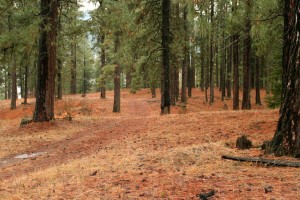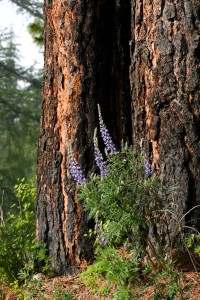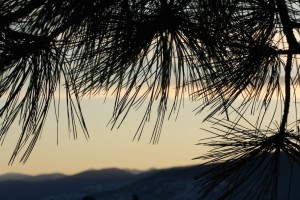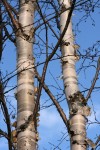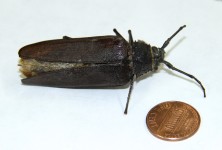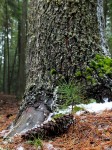One of the first conifers I learned to identify after moving to Boundary County was the majestic ponderosa pine, mainly because of the bark. I had never seen a tree with such unique bark. The first time I found a ponderosa pine, I spent quite a bit of time flaking off the puzzle-shaped pieces of bark with a pocket knife and seeing what different patterns and shades of orange were revealed.
I later learned that only the older ponderosa pine had the characteristic orange-colored bark while the younger trees had dark brown to black bark, with a young tree being less than 100 to 120 years of age. Another difference between young and old ponderosa lies within the tree. Young ponderosa, called bull pine, have coarse, knotty wood while old ponderosa, called western yellow pine, have clear, even-grained wood. Ponderosa pine are also called yellow pine, rock pine, yellow bellies and P-pine.
No matter what ponderosa pine are called, there is no other type of forest like a ponderosa pine forest. The openness of a ponderosa pine stand creates a park-like setting, except the ground is littered with long ponderosa pine needles and pinecones instead of grass. Ponderosa pines have long (5 to 8 inch) needles in bundles of three and egg-shaped cones armed with sharp prickles on the end of each cone scale.
I tend to gravitate towards open ponderosa pine ridges because of their openness and the ability to see farther, especially while looking for shed antlers. These open stands are often found on dry, south-facing slopes or ridges because they are able to grow in drier soils. The ability to survive on less than 12 inches of annual precipitation enables the ponderosa pine to extend from British Columbia to Mexico and east of the Cascade crest into the Black Hills of South Dakota. On road trips through the Southwest US, I’ve been surprised to find ponderosa pine stands on high plateaus of northern Arizona and red-rock valleys in Utah. The open stands remind me of home, especially on hot summer days when they smell like parched earth.
Ponderosa pine are able to thrive in the drier areas because of their extensive taproots that penetrate deep into ground to access water. Studies have found that a three-inch tall, year-old tree can develop a taproot nearly two feet long, while a four-year-old tree that averages a foot in height can have a taproot nearly five feet long. Now imagine how deep the taproot on a 120 foot high ponderosa pine penetrates the earth.
Ponderosa pine need an extensive root system to supply moisture to the long tufts of needles and to support the massive trunks that old trees can produce. When a ponderosa pine attains an age of 400 to 500 years of age, it can be upwards of four to five feet in diameter and over 120 feet high. The largest ponderosa pine in Idaho is six feet in diameter and 182 feet tall while the largest ponderosa pine in the country is seven-and-a-half feet in diameter and 240 feet tall.
Ponderosa trees this big were considered ‘old’ when Lewis and Clark first described them on their expedition in 1804. Shortly after, botanical explorer David Douglas named these majestic trees ponderosa pine because of their great size. I wonder if when they first discovered the tree they too were fascinated by the puzzle-shaped pieces of bark?

